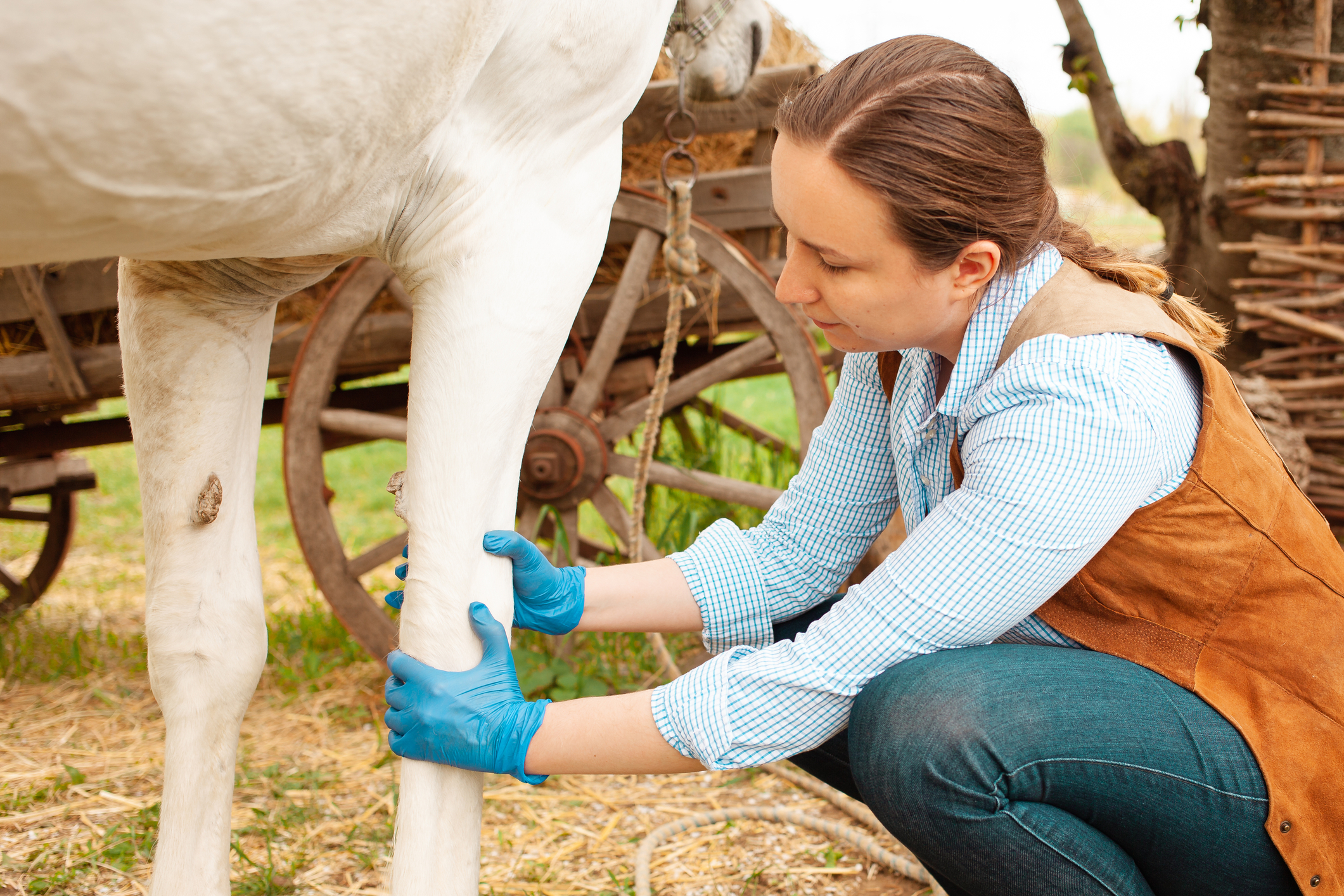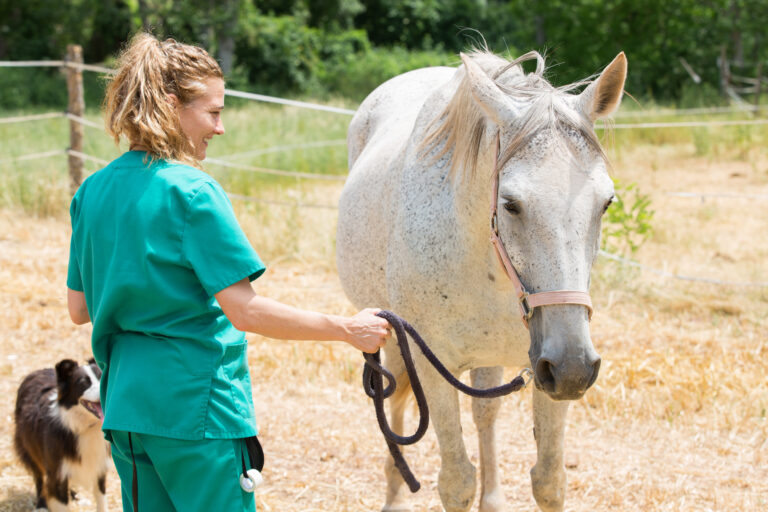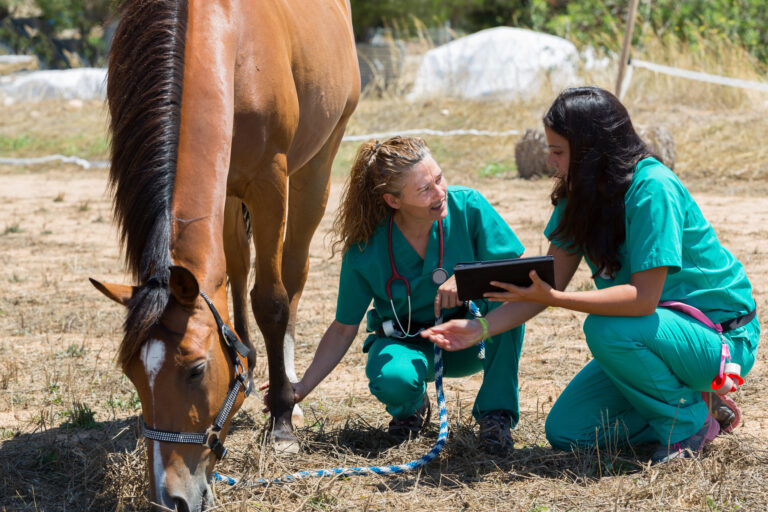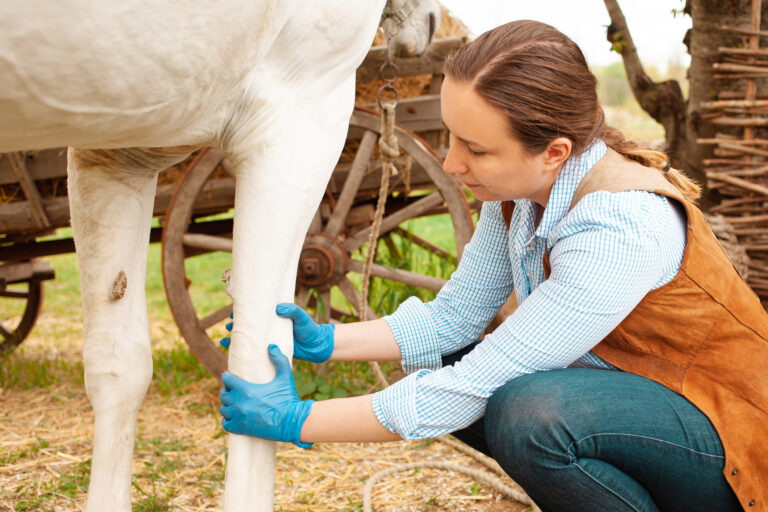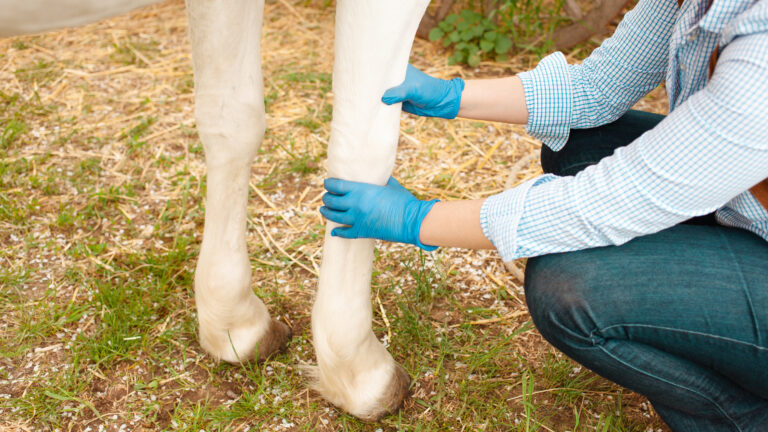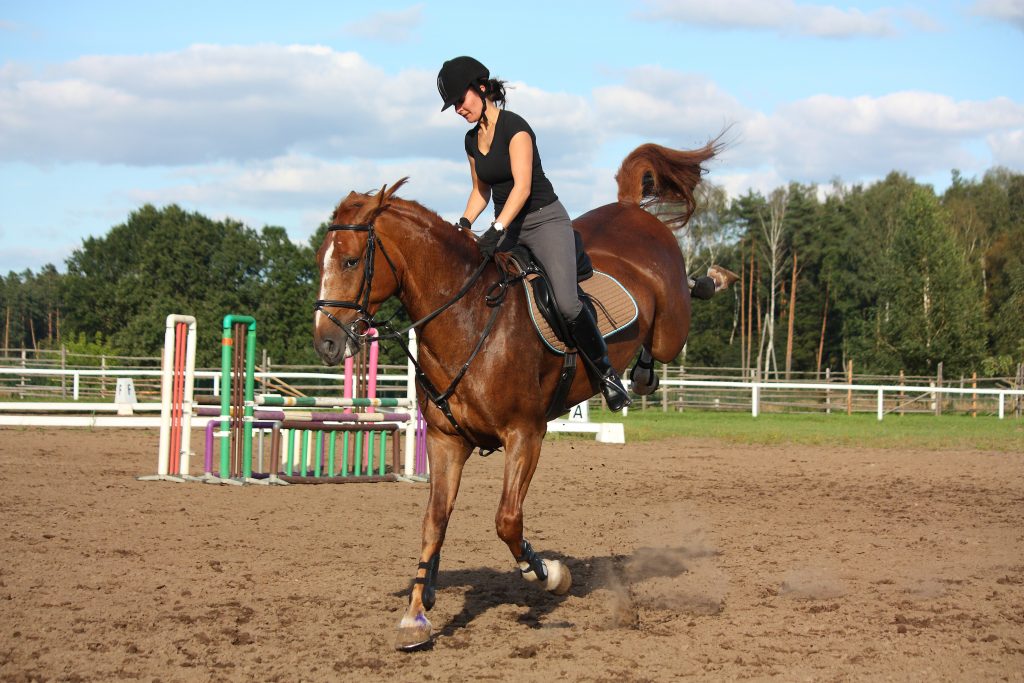Is Your Horse Lame? Early Signs and Essential Actions to Take
If you notice your horse is walking unevenly or seems reluctant to move, it could be showing signs of lameness. Spotting lameness early is crucial because the sooner you act, the better the chances of effective treatment and recovery. Lameness can result from many causes, including injury or hoof problems, and recognising the signs quickly helps prevent further damage.
Pay close attention to how your horse moves and stands. Small changes, like favouring one leg or stiffness, might seem minor but can signal a developing issue. Early detection allows you to take proper steps in managing the problem and seeking veterinary advice before it worsens.
Knowing what to look for and how to respond will help you keep your horse healthy and comfortable. This article will guide you through the key signs of lameness and the best actions to take if you suspect your horse is lame.
Key Takeways
- Early observation of movement helps identify lameness before serious injury occurs.
- Immediate evaluation and care reduce recovery time and long-term damage.
- Proper hoof care and management are essential to prevent lameness.
Understanding Lameness in Horses
Lameness is one of the most common problems affecting a horse’s movement and comfort. Knowing what causes it, how it shows up, and the types you might see can help you act quickly to protect your horse’s health and performance.
What Is Lameness?
Lameness means your horse is not moving normally because of pain or mechanical restriction in one or more limbs. It often shows as an uneven gait, favouring one leg or limping.
It can be hard to spot early signs because horses sometimes hide pain. You may notice your horse taking shorter steps, head bobbing, or reluctance to move.
Lameness is not a disease itself but a sign that something is wrong, most often in the legs, hooves, joints, or muscles. Early detection can prevent more serious damage.
Common Causes of Lameness
Lameness can come from many sources. Trauma like cuts, bruising, or fractures can cause sudden lameness.
Chronic issues include laminitis (inflammation of the hoof) and navicular disease, which affect the hoof and surrounding structures. Laminitis may cause swelling and extreme sensitivity in the hooves.
Other causes include joint strain, tendon injuries, or hoof problems like bruising and poor hoof balance. Some horses develop intermittent lameness, where the limp may come and go, making it tricky to diagnose.
You must monitor your horse closely, especially after work or incidents, to catch these signs early and seek veterinary advice.
Types of Lameness
Lameness can be acute or chronic. Acute lameness appears suddenly and is often linked to injury or trauma.
Chronic lameness develops slowly, possibly from long-term joint inflammation or diseases like navicular syndrome and foundering—where the hoof structure deteriorates over time.
Intermittent lameness happens occasionally and may be due to muscle fatigue or minor injuries. It requires careful observation.
Lameness may also be classified by location: forelimb or hindlimb, which can help you and your vet focus the examination and treatment effectively.
A thorough understanding of lameness types helps you keep your horse comfortable and improves your response to any movement issues. Tracking symptoms and knowing what might be causing them is crucial for the best care.
Examination for lameness : History, visual exam, and conformation
Recognising Early Signs of Lameness
You need to pay close attention to small changes in how your horse moves, physical signs like heat or swelling, and any changes in behaviour. These clues often come before obvious lameness appears.
Changes in Gait and Movement
Look for uneven stride length or irregular foot placement as your horse moves. A horse with early lameness may favour one leg and land more softly on it. Watch for a head nod when the lame limb bears weight, or a dip in the hip if it’s a hindlimb problem.
Subtle limping can be easy to miss, especially if your horse is stiff after rest. You might notice a shortened stride or toe dragging. Lameness linked to deep digital flexor tendon or superficial digital flexor tendon often shows as a reluctance to fully bear weight.
Check your horse at walk and trot on a hard surface for clearer signs. A change in the rhythm or a shortened step can signal issues in the suspensory ligament or coffin joint.
Heat, Swelling, and Pain Responses
Heat and swelling around joints, tendons, or ligaments are common early signs you can feel when examining your horse. Use your hands to gently palpate areas like the fetlock or pastern. If your horse pulls away or shows discomfort, it might be pain.
Heat over the coffin joint or along the tendons indicates inflammation or injury. Be careful checking the suspensory ligament areas for swelling or thickening. Early pain on palpation helps locate the affected limb and the possible cause of lameness.
Keep in mind that some injuries may not show obvious swelling but still cause pain. Early detection by feeling for warmth or sensitivity can help you act before the problem worsens.
Behavioural Indicators
Changes in your horse’s behaviour often accompany early lameness. Your horse may appear reluctant to perform usual tasks or show stiffness when moving after rest.
Watch for signs like uneven weight shifting while standing or reluctance to put full weight on one leg. Sometimes a lame horse will stand with one limb off the ground or shift its weight frequently to avoid pressure.
Your horse may also become cranky or restless during grooming or tacking up if certain areas are sore. Recognising these subtle behavioural changes helps you identify lameness before it becomes severe.
Key Areas Prone to Injury
When you check your horse for signs of lameness, focus on parts more likely to get hurt. Damage to the hoof, tendons, or joints can cause pain and affect your horse’s movement. Knowing where problems often start helps you spot issues quickly.
Hoof and Sole Concerns
The hoof is very important and often suffers injuries like hoof abscesses or sole bruising. An abscess is a pocket of infection inside the hoof, causing sudden, severe lameness. You might notice heat or swelling near the coronary band, the area where the hoof meets the hairline.
Puncture wounds can also harm the sole or toe. These wounds might not be obvious but can lead to infection deep in the hoof. Regular hoof care like cleaning and checking for cracks or stones can help prevent problems.
Watch for uneven wear or sensitivity when your horse walks. These signs may mean the sole or hoof wall is damaged and needs attention.
Tendons and Ligaments
Tendons and ligaments support your horse’s legs and allow movement. The deep digital flexor tendon and superficial digital flexor tendon are especially prone to injury.
If your horse steps awkwardly or shows swelling along these tendons, it might be strained or torn. Tendon injuries cause stiffness and pain, which often worsen with exercise.
You can feel for thickening or warmth on the back of the leg. Early treatment is vital to prevent further damage. Rest and veterinary care may be necessary if you suspect any tendon problems.
Joints and Cartilage
Joints like the coffin joint can suffer from inflammation or wear. Damage to cartilage inside the joints causes pain and limits movement.
Look for swelling, heat, or stiffness around the joints when your horse moves or stands. Cartilage injuries often develop slowly and may be harder to spot at first.
If your horse is lame but shows no visible wound, joint issues could be the cause. Prompt veterinary examination and treatment can help avoid permanent damage.
Evaluating and Diagnosing Lameness
Spotting lameness early requires careful observation and clear steps to identify the problem. You need to start with simple checks before moving to more detailed exams and diagnostic tools.
Initial Assessment by the Owner
You are usually the first to notice changes in your horse’s movement. Look for uneven gaits, reluctance to move, or irregular weight bearing. Pay attention when your horse is walking, trotting, or turning, as subtle signs can show here.
Check for visible swelling, heat, cuts, or sensitivity in the legs. Note when the lameness occurs — during rest, work, or after exercise. Writing down your observations helps you track any changes over time.
This information is vital to share with your vet to guide a focused examination and diagnostics.
Veterinary Examination
During a lameness exam, the vet performs a thorough clinical check. This involves watching your horse move on hard and soft surfaces to see if lameness worsens or improves.
The vet palpates muscles, tendons, joints, and bones for pain or swelling. Flexion tests are often used, where specific limbs are bent to see if pain or lameness increases afterwards.
Your vet may also observe the horse under saddle to spot lameness that appears only when ridden.
Diagnostic Techniques
If the exam is inconclusive, your vet may suggest diagnostic tools to confirm the problem. Common diagnostics include:
- Nerve blocks: injecting local anaesthetic to numb specific areas and identify the lame limb or location of pain.
- X-rays: to check bones and joints for fractures or arthritis.
- Ultrasound: examines soft tissues like tendons and ligaments.
- MRI or CT scans: offer detailed images for complex cases but may require specialised clinics.
Using these tools helps your vet to make an accurate diagnosis and recommend the best treatment plan.
For more on these methods, see comprehensive guides on lameness diagnosis and examination for lameness.
Immediate Actions After Lameness is Detected
When you notice your horse is lame, your first steps must focus on preventing further injury and managing pain. Controlling movement and treating minor injuries can reduce complications until you get veterinary care.
Safe Handling and Stall Rest
Keep your horse calm and restrict movement immediately. Moving a lame horse too much risks worsening fractures or soft tissue trauma. Lead your horse quietly to a safe stall or enclosed area with minimal distractions.
Ensure the stall is clean, dry, and free of sharp objects. Provide enough bedding to cushion your horse’s limbs. Stall rest is crucial, especially if you suspect a fracture or severe injury, to stop further damage.
Avoid forcing your horse to walk on hard or uneven ground. Keep handling calm and gentle to prevent increased stress and possible worsening of lameness.
Basic First Aid and Blistering
Check your horse’s limbs for cuts, swelling, heat, or obvious trauma. Clean minor wounds with antiseptic and apply a light bandage to reduce bleeding and protect from dirt.
Blistering is sometimes used under veterinary advice to encourage healing in old or soft tissue injuries. Do not attempt blistering yourself as improper use can cause harm. Instead, focus on reducing swelling with cold hosing and keeping the limb rested.
If you see severe swelling, open wounds, or suspect broken bones, contact your vet immediately. Applying cold packs and a clean bandage can help control pain and limit swelling before professional care arrives.
For more on recognising lameness and managing first steps, see this detailed guide on diagnosis and management of lameness in the horse.
Treatment and Recovery Options
Managing lameness requires a clear plan that targets the cause and supports healing. Your horse’s recovery depends on appropriate care, adjusted exercise, and attention to hoof health.
Veterinary Treatments
Your vet will first diagnose the cause with a physical exam, possibly using X-rays or ultrasound. Treatment may include anti-inflammatory medications or pain relief to reduce swelling and encourage movement.
In some cases, joint injections or other therapies like shockwave treatment can support healing. Surgery might be necessary if there is severe damage, but this depends on the individual case.
Prompt treatment helps prevent further injury. Follow your vet’s advice regarding rest periods and medication to ensure the best outcome for your horse.
Corrective Shoeing and Farriery
Farriery plays a crucial role in your horse’s recovery and preventing future lameness. Your farrier will assess hoof balance and wear to design corrective shoes that support joint alignment and relieve pressure areas.
Corrective shoeing can improve gait and reduce pain caused by uneven weight distribution. It is especially important for competition horses that require precise hoof care to maintain performance.
Regular farriery maintenance helps maintain hoof health and supports ongoing recovery. Work closely with your farrier to adjust the shoeing plan as your horse heals.
Rehabilitation and Exercise Programmes
A controlled exercise programme helps rebuild strength and flexibility after lameness. Initially, you will follow a period of rest, then gradually introduce light walking and trotting under guidance.
Exercises focus on improving muscle tone and joint mobility without causing strain. Avoid sudden increases in work intensity, especially for horses returning to competition.
Consider physiotherapy or massage to ease stiffness and support recovery. Monitoring your horse’s response during rehab prevents setbacks and promotes a steady return to full fitness.
For detailed treatment insights, see the information on Equine injury, therapy and rehabilitation.
Preventative Hoof Care and Management
Keeping your horse’s hooves healthy requires planned care and regular attention. Proper farriery and careful inspections help avoid many common problems. You need to act quickly if you spot early signs of trouble.
Routine Farriery Practices
Regular farriery is essential to maintain hoof health. Your farrier should trim the hoof every 6 to 8 weeks to keep the toe length balanced and prevent uneven wearing. This helps your horse move comfortably and reduces the risk of lameness.
Shoeing is needed only if your horse’s work or environment demands extra protection. When shoes are applied, they must fit well to avoid pressure points or damage to the hoof wall. Discuss with your farrier how often shoes should be reset to avoid overgrowth or poor hoof shape.
Keep track of your farrier’s visits and the work done. Good communication with the farrier ensures your horse’s feet stay in the best condition and any changes are monitored closely.
Regular Inspections for Early Signs
Check your horse’s hooves daily for dirt, cracks, or unusual wear spots. Small cracks or chips in the hoof wall can lead to bigger problems if ignored. Pay close attention to the toe area because excessive wearing or flaring there may indicate uneven gait or discomfort.
Look for signs like heat, swelling, or sensitivity when you pick up the foot. These can signal infections or inflammation inside the hoof. If your horse shows a preference for one leg or a change in movement, inspect that hoof more carefully.
Use a simple checklist when inspecting:
- Cleanliness of the hoof
- Condition of the frog and sole
- Visible cracks or chips
- Shape and length of the toe
- Reaction to hoof picking
Early detection through regular checks helps you and your farrier act quickly to prevent lameness and more serious hoof diseases.
For more detailed advice on hoof care, see Understanding equine hoof care: your guide to horse health care and management.
Long-Term Management and Return to Work
Managing your horse’s recovery after lameness needs careful planning. You must create a clear exercise routine and support your horse’s fitness while avoiding strain. This helps reduce the chance of re-injury and builds strength gradually.
Designing an Individual Exercise Plan
Your horse’s exercise plan should start with light, controlled work. Focus on short, low-impact sessions like walking on soft ground. Slowly increase time and intensity based on how your horse responds.
Monitor your horse closely for any signs of pain or swelling during and after exercise. Avoid sudden changes in workload. Adjust the program based on vet advice and your observations.
A typical plan might include:
- Week 1-2: Hand walking for 10-15 minutes
- Week 3-4: Introduce slow trotting for short periods
- Week 5+: Gradual increase in duration and intensity
Document progress carefully to track improvements and setbacks.
Supporting Cardiovascular Fitness
Maintaining your horse’s heart and lung health during recovery is vital. Start with activities that raise the heart rate gently without stressing injured limbs, such as controlled exercise in hand or swimming if available.
You should aim for consistent, moderate effort to improve fitness in a safe way. Adjust the duration and frequency based on your horse’s energy levels and recovery speed.
Use tools like heart rate monitors to measure fitness improvements. Good cardiovascular health supports faster healing and prepares your horse for return to competition work without excess risk of relapse.
If your horse is a competition horse, this careful balance helps maintain competitive condition while reducing the risk of long-term issues.
For more on care during recovery, see the book on long-term management.
Frequently Asked Questions
Lameness in horses can show up in subtle ways like uneven gait or stiffness. You need to watch closely for changes in how your horse moves and behaves. Early detection helps you manage the issue effectively without severe consequences.
What are the initial indicators of lameness in a horse’s front legs?
Look for uneven weight-bearing or favouring one front leg. Your horse might show a shortened stride or head nod when walking. Notice if they are reluctant to move or show stiffness after rest.
Can equine lameness be managed without resorting to euthanasia?
Yes, many cases of lameness can be treated successfully. Rest, corrective shoeing, and veterinary care often help your horse recover. Euthanasia is usually a last option when pain or mobility cannot be managed.
How can you discern if a horse is suffering from hind leg lameness?
Watch for an irregular rhythm or shorter steps from the back legs. The horse may shift its weight strangely or have trouble rising. Observing your horse on different surfaces can make these signs clearer.
What are the recommended treatments for a horse experiencing mild lameness?
Mild lameness often requires rest and limited exercise. Applying cold therapy and anti-inflammatory medications can ease pain. A vet might suggest specific shoeing or physical therapy depending on the cause.
Is it possible for a horse to fully recover after displaying lameness symptoms?
Yes, many horses return to full soundness with proper care. Recovery depends on the cause and how quickly you intervene. Regular monitoring and follow-up treatments improve the chances of full healing.
What steps should be taken when a horse exhibits early signs of laminitis?
Stop all work and restrict your horse’s movement immediately. Contact your vet to start treatment, which might include pain relief and special hoof care. Early action is critical to prevent severe damage. For more on identifying health issues like lameness, see this guide on Frequently Asked Questions about equine lameness.

